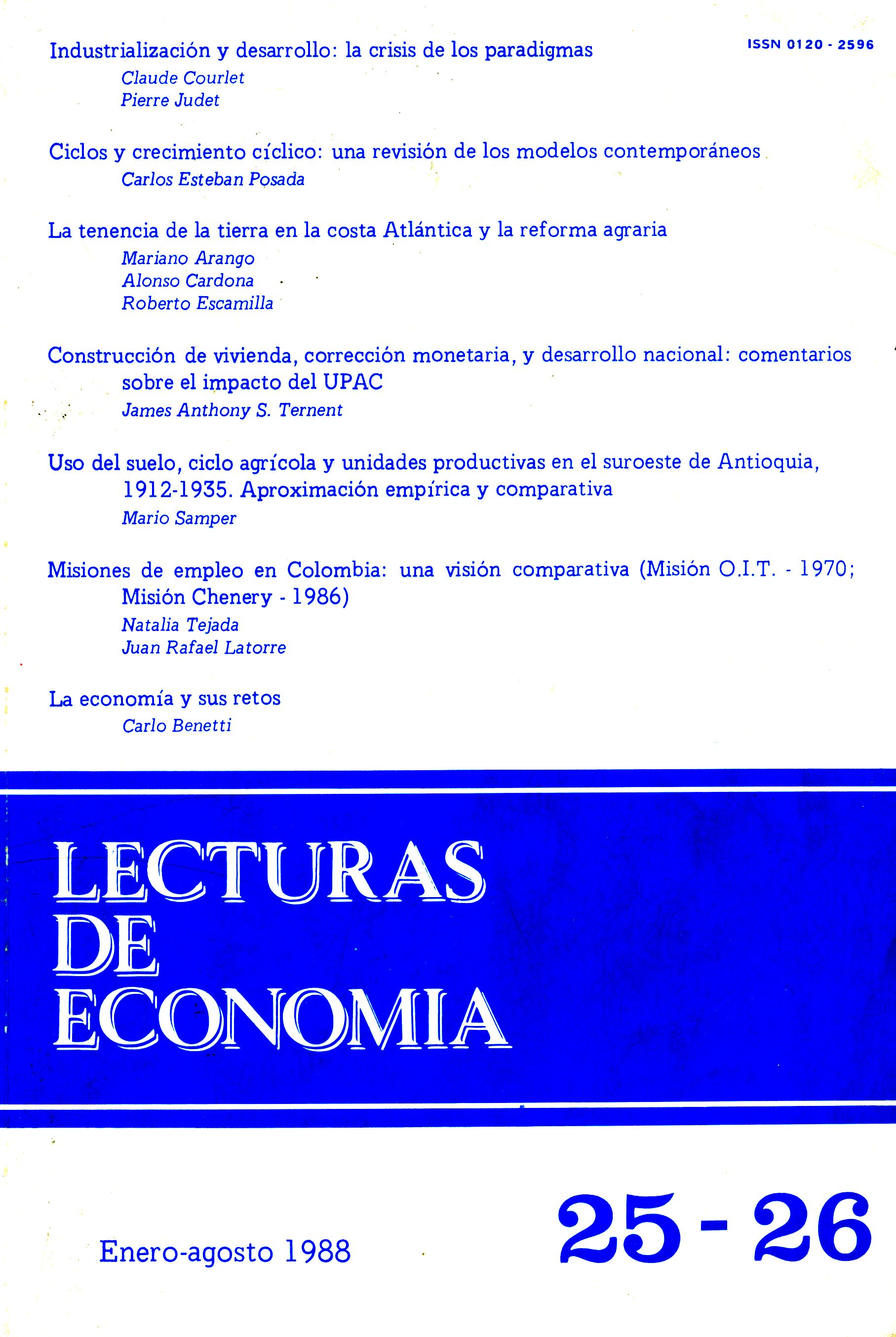Uso del suelo, ciclo agrícola y unidades productivas en el suroeste de Antioquia, 1912-1935. Aproximación empírica y comparativa
DOI:
https://doi.org/10.17533/udea.le.n25-26a7764Abstract
• Resumen: El trabajo presenta una visión detallada de las características del uso de la tierra y la ocupación de fuerza de trabajo, tanto asalariada como familiar, en diversos tipos de unidades productivas del suroeste antioqueño en el período estudiado. Retoma hipótesis de un estudio anterior sobre la región entre 1850 y 1912 para explicar el impacto de la progresiva especialización caficultora sobre los ciclos de labores agrícolas y sobre la interacción entre productores directos y dueños del capital. Propone algunas posibilidades de análisis comparativo y ciertos referentes de tipo conceptual.
• Abstract: The paper discusses in a detailed form the current characteristics of the land use and labor force, in wage form as well as familiar, within different types of productive unities in the area under examination related to the period. It returns to the hypothesis of a previous study on the Antioquia south west between 1850-1912, in order to explain the impact of the progressive coffee specialization over the agricultural cycles and over the interaction between direct producers and capital owners. It suggests some possibilities of comparative analysis and certain related of conceptual order.
Downloads
Downloads
Published
How to Cite
Issue
Section
License
This page, by Universidad de Antioquia, is licensed under a Creative Commons Attribution License.
Authors who publish with this journal agree to retain copyright and grant the journal right of first publication, with the article licensed under a Creative Commons Attribution-NonCommercial-ShareAlike License allowing others to share it as long as they acknowledge its authorship and original publication in this journal.
Authors can enter into separate, additional contractual arrangements for the non-exclusive distribution of the journal's published version of the work (e.g., post it to an institutional repository or publish it in a book), provided that these arrangements be not for profit and the journal be acknowledged as the original source of publication.
Authors are permitted and encouraged to post their papers online (e.g., in institutional repositories or on their websites), as it can lead to valuable exchanges as well as greater citation of the published work.















